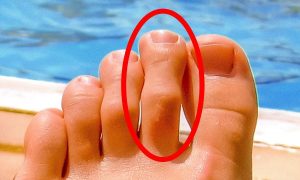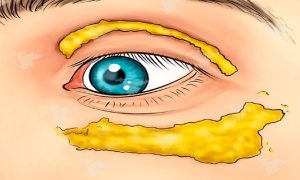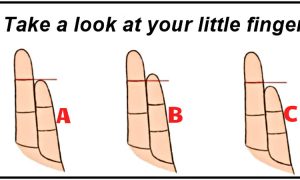The immune system protects your body against bacteria, viruses, and other elements that could harm your health. This causes several effects that can range from flu to fever, redness and more. However, the immune system may also try to protect you against things that don’t mean any harm – these things are what we call allergens.
Allergic reactions: How it all starts?
Allergens are the culprits behind allergic reactions. But mostly, it happens because the immune system does not work correctly and tries to protect you against something incapable of harming you in any way. These allergens activate the immune system immediately causing a wide array of symptoms that could lead to severe health problems.
You can get allergies from practically anything, and from any source. It could be by eating something, touching something or by merely inhaling it. The thing is – allergies can be very dangerous, so it is essential to know whether you have one and how you can prevent it.
Symptoms of an allergic reaction
If you are allergic, you may already know that the symptoms of allergies can be many. Sometimes, however, people are allergic to something but do not find out about it until it is too late or in the worst possible scenario. Here we are going to tell you how to know if you have an allergy to something.
When you have contact with an allergen that causes a mild allergic reaction, you may experience one or several of these symptoms:
- Colored spots on the skin
- Itch and rash
- Rhinitis or nasal congestion
- Constant sneezes or coughs
- Scratchy or swelled throat
- Itchy or watery eyes
Symptoms escalation
But these simple symptoms can not only escalate but also appear alongside more severe and harmful reactions, such as:
- Dizziness
- Fear, anxiety or hallucinations
- Unconsciousness
- Tightness or pain in the chest or in the right side
- Heart palpitations
- Blushing of the face
- Body weakness or heavy fatigue
- Swelled throat with breathing or swallowing difficulty
- Swelling in the face, eyes, tongue and lips
- Nausea or vomiting
- Cramps or abdominal pain
- Diarrhea
These are the most common reactions and symptoms allergic people experience after direct contact with an allergen. It is crucial to seek help immediately if you feel any of the most severe reactions, as they are an indication that your body is not responding well. Problems such as breathing difficulty and heart palpitations can lead to hazardous situations or death in just a matter of minutes.
What causes allergic reactions?
An acute allergy can be part of a genetic problem in a family that passes from generation to generation via blood. However, most allergic reactions are utterly inexplicable.
Luckily for most allergic people, these allergies happen mostly against the same allergens. People who suffer from these reactions may have adverse symptoms when in contact to:
- Dander, pet aroma
- Bee and wasp stings or bites from other insects/animals
- Seafood, nuts, or even meat
- Harsh medications such as penicillin, aspirin or acetaminophen
- Plants
- Pollen, mold or fungus
How long for an allergic reaction to occur?
After being in contact with an allergen, most reactions start appearing within seconds. This could be between 5 to 200 seconds of the contact, and the symptoms may appear without further notice.
The immediate severe reaction to allergens is known as anaphylaxis and can induce harmful symptoms such as blockage of the airways and a harsh drop or increment of blood pressure.
How to diagnose allergic reactions?
A doctor can diagnose an allergy by looking for signs and symptoms of allergic reaction to different allergens. Sometimes, doctors may even inject, or put your body in direct contact with an allergen to see how it responds, all to see whether you are allergic or not.
But first, of course, doctors will want to know more about your health history. They may want to know if you’ve ever suffered from any severe allergic reaction, or if there’s any substance or element that causes adverse effects on your body.
Then, if the doctor can’t figure out the allergy from your history or set of experiences, they will perform one or several of the next tests:
Skin Tests:
These tests focus on applying an allergen directly on the skin of the patient. If the person starts suffering from any adverse reaction, most likely that person is allergic to the element. This test is perfect to find out about these common allergies:
- Food allergies
- Mold, Pollen, Dander Allergies
- Medicine allergies
- Venoms allergies
- Contact dermatitis allergy (touching a particular substance)
Elimination-Type Tests:
They help in many different types of allergy reactions but mostly work in food allergies. It is merely based on getting a probable allergen out of contact from the patient for several days or weeks to see how the body of this patient reacts.
Blood Tests:
These tests are mostly to check antibodies in your blood and see how they react to different allergens. Most of the time blood tests are the most effective way to practically any type of allergy, especially for respiratory and skin ones. However, they are more expensive and sometimes more laborious which is why they are not the most common.
How to treat allergic reactions?
Treating a body reaction to an allergy is not as easy as it seems. Especially when you don’t know what’s causing an allergic reaction, you may never find out until it is too late to treat. However, if you are allergic to a common allergen and the symptoms are not severe, you may never find out or eventually ignore your situation.
But it is recommended that if you have an allergy, always have Benadryl (diphenhydramine) in your purse or close to you. This medication is outstandingly effective for mild allergic reactions and can prevent severe symptoms to appear if taken soon enough.
For severe symptoms, it is vital to seek medical attention as soon as possible. Especially for people who tend to suffer from breathing problems, CPR and breathing exercises to avoid lack of air to the lungs is critical to keep the person alive and well.
Luckily, there also are some medications useful for severe reactions, such as an EpiPen injector. Epinephrine is a drug that does not eliminate the allergic reaction but minimizes it by raising blood pressure and opening breathing airways to avoid sudden pharm.
Avoid & prevent
Other ways to avoid an allergic reaction to become fatal is to lay in the floor completely flat on the back, elevate the legs at least 40º above the floor and cover the body with a cotton blanket or similar material. This keeps the body functioning, blood pressure at the right level, and improves breathing performance.
It is vital to find the catalyst for the allergic reaction and take yourself or the allergic person away from the allergen before it is too late. Especially for food allergies, vomiting the allergen is sometimes necessary to avoid further complications.






















